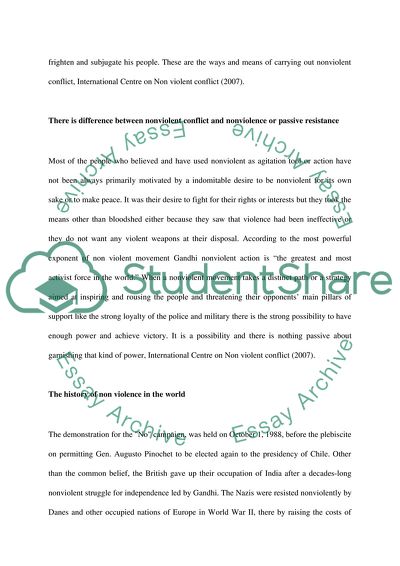Cite this document
(Nonviolent Conflict vs Nonviolence or Passive Resistance Article, n.d.)
Nonviolent Conflict vs Nonviolence or Passive Resistance Article. Retrieved from https://studentshare.org/politics/1732336-non-violent-political-movement
Nonviolent Conflict vs Nonviolence or Passive Resistance Article. Retrieved from https://studentshare.org/politics/1732336-non-violent-political-movement
(Nonviolent Conflict Vs Nonviolence or Passive Resistance Article)
Nonviolent Conflict Vs Nonviolence or Passive Resistance Article. https://studentshare.org/politics/1732336-non-violent-political-movement.
Nonviolent Conflict Vs Nonviolence or Passive Resistance Article. https://studentshare.org/politics/1732336-non-violent-political-movement.
“Nonviolent Conflict Vs Nonviolence or Passive Resistance Article”, n.d. https://studentshare.org/politics/1732336-non-violent-political-movement.


